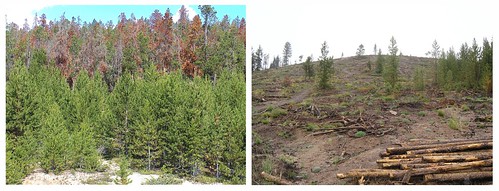In the wake of the 2012 summer fires, Colorado’s most precious natural resource, water, is a top priority for state, municipal, and federal agencies. Denver Water and the U.S. Forest Service are leaders in addressing water issues and growing concerns over watershed health. Just under two years ago, both partnered to combine approximately $33 million in funding to target specific areas for restoration and mitigation work to reduce potential fire impact in key watersheds that supply water to Front Range communities.
Two new projects of the Denver Water partnership are underway on the White River National Forest on the Dillon Ranger District near Breckenridge, Colo. These projects target “zones of concern” identified by the Blue River Watershed Assessment in collaboration with the Forest Service and Denver Water. Cary Green, the East Zone timber management assistant said, “The partnership is hugely beneficial to cost-sharing vegetative treatments in the Blue River Watershed. Together, we are able to improve forest health, forest vegetative diversity, and achieve substantial fuels reduction in and around high priority watersheds.”

Most of the restoration work in areas affected by the mountain pine beetle outbreak will use clear-cutting lodgepole pine as the best management practice for the vegetative type, and one that most closely mimics its natural regeneration pattern. After the dead and dying trees are removed, slash (limbs, needles and tops of trees) are left on the ground to provide micro-sites for seedlings and the next generation of forest to establish itself and help prevent soil erosion. In recently harvested areas, seedlings have already begun to establish themselves at a rate between 300 and 1800 seedlings per acre.
To date, over 2,700 acres have been treated in and around the Dillon Reservoir. Another 2,000 acres are partially complete, prepped for contract, or set to be completed in 2013. As the Forest Service looks ahead, with water health as one of its top priorities, Forest Service and Denver Water collaborations serve as a prime example of how effective partnerships should be accomplished in the future.


